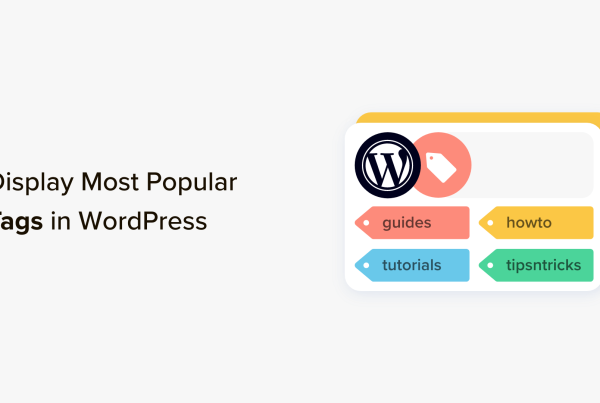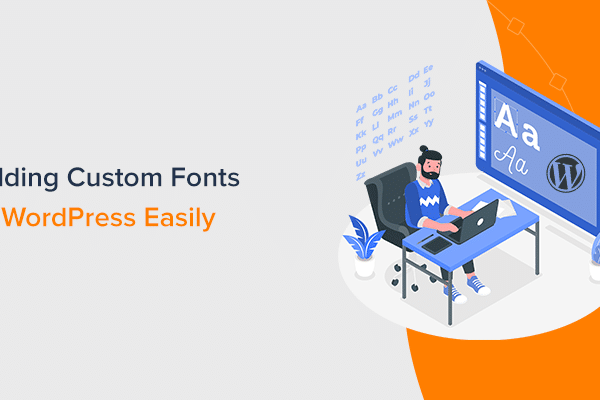What is serverless WordPress? | Why would I go static WordPress? | Who needs static WordPress hosting? | Who should avoid serverless WordPress? | How serverless WordPress works | Top static WordPress hosting companies compared | What about the performance? | What if I want to go DIY? | Final verdict
What is serverless WordPress?
The word “serverless” is perhaps not the most fortunate since you still do need a server to make your site work. “Static WordPress” is much more on point.
So the basic idea of serverless / headless / WordPress to static is this:
Instead of generating every page on the fly each time a visitor wants to see it, you can convert your whole WordPress site to static HTML just once, and then serve that to everyone multiple times.
Something like this:

What this means is that headless WordPress is a process involving two main steps:
- Convert your site to static (HTML, JS, CSS).
- Serve it to people instead of the regular site.
Now the cool thing is that you can still work with your “seed” WordPress site pretty normally. You get to add plugins, themes, work in the wp-admin, change stuff, write posts, etc. The only difference is that when you’re done with all that, you have to convert the site to static and deploy it to the server.
There are some pros and cons to the whole approach:
Why would I go WordPress to static?
? There are four reasons headless WordPress makes sense:
- Security. Static is extra safe. I would even risk saying that it couldn’t be more safe. No WordPress security plugin, no security guideline (complex password much?) can give you the same level of security as does headless WordPress. Basically, since it’s all static, there’s nothing to break into … other than the actual machine on which the files are sitting.
- Speed. Static files load faster than dynamic files. PHP instructions and database calls simply take time to execute. Since there’s no such step, static loads faster.
- Cost (usually). Static should be cheaper to host, especially if you’re dealing with high traffic. After all, there’s less server time required to process the requests. I’m saying that it “should” be cheaper because, in practice, this is not always the case.
- Peace of mind. This is a combination of all of the above, but the idea is that you don’t have to worry about any updates, hackers, maintenance, scripts breaking, bad plugins, etc. Static sites simply
don’tshouldn’t break.
However!
? There are some pretty significant downsides as well, and especially if you’re used to that “WordPress life”:
- Constant reconverting. You have to reconvert and deploy your site each time you change anything on it.
- Comments don’t work. Okay, I’m being harsh. What I actually mean is that the native WordPress comments won’t work on serverless WordPress, plus no comment plugins will work either, since they all require PHP. Your only solution is to switch to Disqus or use social comments (those work off outside sources).
- Contact forms don’t work. Same thing as with comments. If you want contact forms, you’d need to embed from Typeform, Google Forms, Zendesk, etc.
- WooCommerce doesn’t work. Again, WooCommerce is a dynamic PHP plugin. Therefore, it won’t work. Alternative? Switch to Shopify and then integrate it with your WordPress site.
- Forums don’t work. Forget about bbPress. Zendesk provides some alternatives.
- Membership modules don’t work. If you’re using BuddyPress or WPMember or anything like that, again, those won’t work. You’ll need to switch to third-party.
- Site search doesn’t work (!) – yep, your good ol’ WordPress site search won’t work. You can add a Google Search module as an alternative. Though, of course, not perfect.
In general, if you use a plugin that does any sort of dynamic thing based on the visitor’s input, it won’t work on serverless WordPress.
Pretty significant downsides, that’s for sure. Plus, those serverless WordPress setups are generally difficult to manage if you want to go the extra budget-minded route (read: you want to pay just for the server space and not sign up to an out-the-box serverless WordPress solution, which we’ll compare a couple of below).
In such a DIY scenario (we also have some DIY serverless options for you at the bottom of the post), you will find yourself working with the command line and communicating with the server directly. Of course, this might not scare you at all, but for many people, this is a no-go area.
So, before we list some of the viable headless WordPress hosting solutions in the market, let’s first answer the main question:
Who needs static WordPress anyway?
So despite the advantages of the serverless WordPress setup – the speed, security, etc. – isn’t the whole point of WordPress that the site remains dynamic with the changes taking place in real time?
It’s hard to argue with that, but there are still some viable use cases where WordPress to static can be, dare I say, better.
a) Freelancers and agencies
This is probably the most intuitive scenario where static WordPress makes a lot of sense.
As a WordPress freelancer, you may encounter clients that aren’t very interested in updating their sites at all (or even publishing content) after you hand them the keys to their new site. Maybe they need a simple business-card website, or can’t be bothered to do anything with it due to lack of time or personnel.
At the same time, you don’t want to leave anything to chance and risk the site getting broken into when there’s a new vulnerability discovered or something.
In a scenario like that, converting the site to serverless WordPress just makes sense:
- the site remains online,
- it can be accessed by everyone,
- it’s cheaper to run and uber-fast,
- the client doesn’t even notice nor care that the thing is static.
You get all of static’s benefits with none of the downsides.
In such a case, you basically treat WordPress as your “site builder” and not the engine running the site.
b) Sites that don’t get updated a lot
Generally speaking, having your WordPress in an always-on state – where everyone can log in at any time and do whatever – isn’t perfect.
If you’re already updating the site very infrequently then why not lock it down completely when nothing is going on. Again, this is a much safer and much cheaper way to host your site.
Speaking of security:
c) Sites where security is of the highest importance
There are cases where you just can’t afford for your site to be broken into and messed with.
And this isn’t even about government sites and so on (I’m sure those live by their own standards).
But, for example, even your local school wouldn’t want their website to be hacked into and populated with content that is inappropriate or obscene. Even though situations like that can be explained afterwards, the bad impression remains.
d) Sites with complex designs
In the age of the page builder, it’s not uncommon to handle the bulk of a site’s design in the builder itself. As in, you get just a simple framework theme and then build everything else with your favorite page builder, plus add some cool plugins to the mix to make the site look extra-great.
The only problem with that is that such a site ends up being a bit heavy, which will be reflected in its performance.
Going WordPress to static is a quick fix that still lets it look great, and also perform great at the same time.
e) Sites that have run their course
Certain types of websites have limited shelf lives. This might be a site for an event, gov-founded project, an archive, etc.
Some of those sites may have to remain active for legal reasons or just to show people what had happened. Keeping those sites as live WordPress installs only creates problems. You have to maintain them, come back and update the scripts, etc. It’s therefore a lot simpler to go WordPress to static and be done with it for good.
f) Demo sites
For example, if you’re a WordPress themes developer and want to showcase demos of your themes, why not do that on static sites rather than run some elaborate WordPress setups?
A bonus is that you also don’t have to worry that things will break after a rogue WordPress update.
Who should avoid static / headless WordPress hosting?
This basically all comes down to one factor:
If you find yourself logging into wp-admin every day, avoid serverless WordPress!
It would just be too much work on a daily basis to have to deal with converting your site from WordPress to static over and over again. Especially since converting a normal-sized blog can take anything from 20-60 minutes.
In other words, if you’re a blogger, you can forget about headless WordPress hosting.
How serverless WordPress works
There are two paths to serverless WordPress:
- path (a) is simply about signing up with a headless WordPress hosting company and letting them do all the heavy lifting, while you can use a WordPress dashboard pretty normally
- path (b) is the DIY approach; this time it’s you who takes a working WordPress site, converts it to static and then uploads it somewhere from where it can be served to visitors
Let’s focus on path (a) here since it’s more approachable for everyone. We’ll have some recommendations on the DIY approach at the end of this post.
In general, all static WordPress solutions out there are similar from a user’s point of view.
Your experience starts when you sign up with a headless WordPress hosting platform and pick your plan, the usual.
After that, you get to create new WordPress sites with a single click – multiple ones as well.
Those sites are fully functional and can be used like any other WordPress website. You can log in, install themes, plugins, configure anything, do custom code modifications, the lot.
The only difference is that the site is not visible to the public. For all it’s worth, it’s your own personal staging environment.
When you’re done making your tweaks, you can roll it all out to the public with a couple of clicks. The conversion process might take a while depending on how big the site is (20-60 minutes, even).
The whole process is very approachable and simplified to the max. Basically, no server management skills are required.
That being said, there are some differences between the top serverless WordPress solutions out there.
Top static WordPress hosting companies compared: Shifter vs HardyPress
Here’s a simplified comparison table:
| Shifter | HardyPress | |
|---|---|---|
| Price | $0 – 1 site $20 – 3 sites $40 – 10 sites $90 – 30 sites $150 – 50 sites |
$5 – 1 site $20 – unlimited sites from $350 – custom for enterprise |
| Free trial | Y – credit card required | Y – no credit card required |
| CDN | Y | Y |
| HTTPS | Y | Y |
| Backups | Y | Y |
| Integrated site search and contact forms | N | Y |
Here’s the in-depth comparison. The players we’re looking into here are: Shifter vs HardyPress:












